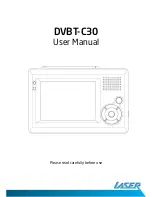
100302 - 4000W DIGITAL HYBRID PORTABLE GENERATOR
OPERATION
16
-1
OFF
OFF
ON
4. Turn the engine switch to the “ON” position.
5. Pull choke knob out to the “CHOKE” position.
6. Pull the recoil cord slowly until resistance is felt and then pull
rapidly.
7. As engine warms up, push the choke knob in to the “RUN”
position.
NOTICE
Keep choke in “CHOKE” position for only 1 pull of the recoil
cord. After first pull, press the choke knob in to the “RUN”
position for up to the next 3 pulls of the recoil cord. Too much
choke leads to spark plug fouling/engine flooding due to the
lack of incoming air. This will cause the engine not to start.
NOTICE
For gasoline restarts with hot engine in hot ambient >
86°F (30°C):
Keep the choke in 75% of the “CHOKE” position
for only 1 pull of the recoil cord. After first pull, push choke to
the “RUN” position for up to 3 more pulls of the recoil cord.
Too much choke leads to spark plug fouling/engine flooding
due to the lack of incoming air. This will cause the engine not
to start.
NOTICE
For gas starting in cold ambient < 59°F (15°C):
The choke
must be in 100% of the “CHOKE” position for manual start
procedures. Do not over-choke. As soon as engine starts, push
the choke knob in the “RUN” position.
NOTICE
If the engine starts but does not continue to run make certain
that the generator is on a flat, level surface. The engine is
equipped with a low oil sensor that will prevent the engine
from running when the oil level falls below a critical threshold.
Connecting Electrical Loads
Let the engine stabilize and warm up for a few minutes after
starting.
Plug in and turn on the desired 120 or 240 (if applicable) Volt AC
single phase, 60 Hz electrical loads.
–
DO NOT connect 3-phase loads to the generator.
–
DO NOT overload the generator.
WARNING
Connecting a generator to your electric utility company’s
power lines or to another power source may be against the
law. In addition this action, if done incorrectly, could damage
your generator and appliances and could cause serious injury
or even death to you or a utility worker who may be working
on nearby power lines. If you plan to run a portable electric
generator during an outage, please notify your electric utility
company immediately and remember to plug your appliances
directly into the generator. Do not plug the generator into
any electric outlet in your home. Doing so could create
a connection to the utility company power lines. You are
responsible for ensuring that your generator’s electricity does
not feed back into the electric utility power lines.
If the generator will be connected to a building electrical
system, consult your local utility company or a qualified
electrician. Connections must isolate generator power from
utility power and must comply with all applicable laws and
codes.
















































